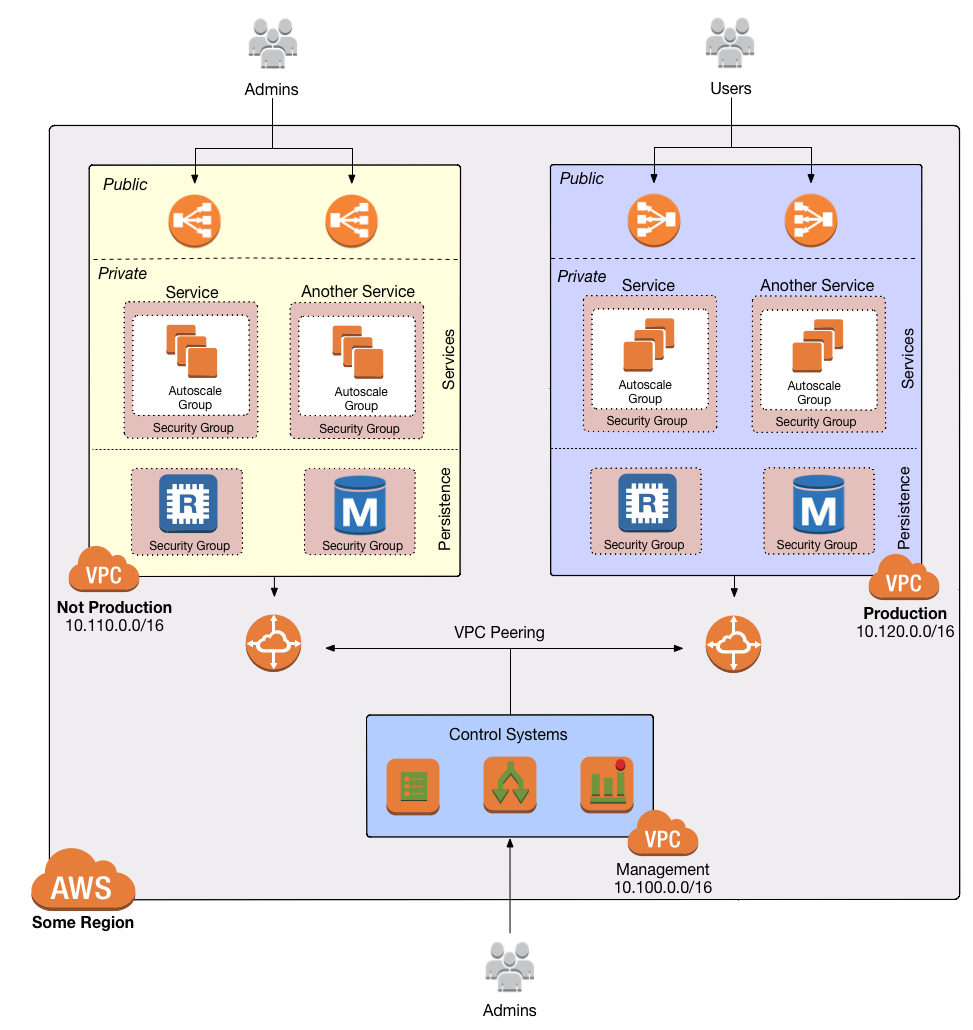VPC Peering
 Multiple VPCs connected via VPC peering
Multiple VPCs connected via VPC peering
Normally, you use VPCs to create isolated networks, so the resources in one VPC have no way to access the resources in another VPC. VPC Peering is a networking connection between two VPCs that gives you a way to allow limited, controlled cross-VPC communication. For example, you might have a management VPC where you run DevOps tooling (e.g., Jenkins), and you may want to allow that VPC to have limited access to your staging and production VPCs so that DevOps tooling can carry out maintenance tasks.
To support this use case, you can create a VPC peering connection between the management and staging VPCs, and another one between the management and production VPCs, plus route table entries that allow certain traffic to be routed between those VPCs (e.g., allow specific subnets in the management VPC to talk to specific subnets in the staging and production VPCs). Note that peering connections are not transitive, so while the management VPC will get limited access to staging and production, staging and production will not have any access to each other (this is why it makes sense to put the DevOps tooling in its own VPC, rather than shoving it directly into the staging or production VPCs).
info
If you have a large number of VPCs to interconnect, setting up a peering connection between each pair (n2 connections total) can quickly become impractical. In this case, you should look into using the AWS Transit Gateway or Shared VPCs.